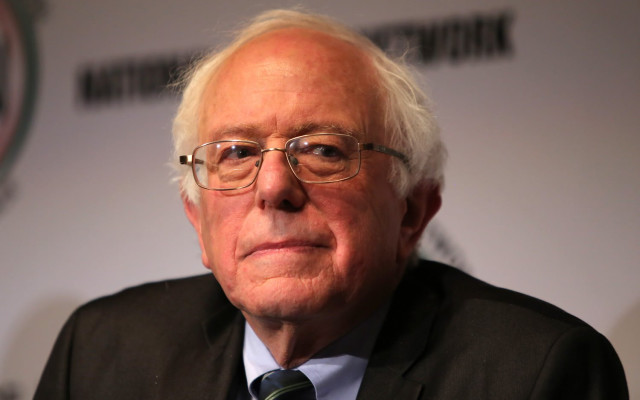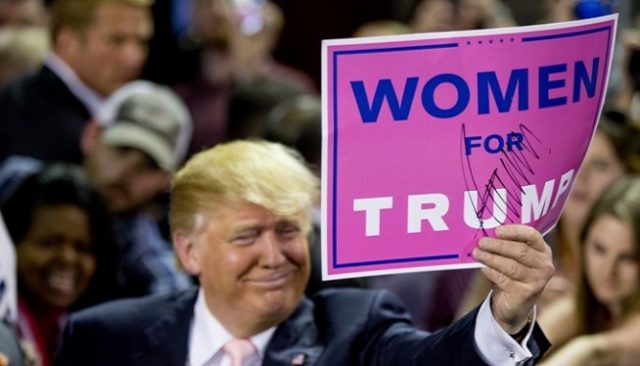Why Bernie Sanders Has to Raise Taxes on the Middle Class by Daniel Bier
Willie Sutton was one of the most infamous bank robbers in American history. Over three decades, the dashing criminal robbed a hundred banks, escaped three prisons, and made off with millions. Today, he is best known for Sutton’s Law: Asked by a reporter why he robbed banks, Sutton allegedly quipped, “Because that’s where the money is.”
Sutton’s Law explains something unusual about Bernie Sander’s tax plan: it calls for massive tax hikes across the board. Why raise taxes on the middle class? Because that’s where the money is.
The problem all politicians face is that voters love to get stuff, but they hate to pay for it. The traditional solution that center-left politicians pitch is the idea that the poor and middle class will get the benefits, and the rich will pay for it.
This is approximately how things work in the United States. The top 1 percent of taxpayers earn 19 percent of total income and pay 38 percent of federal income taxes. The bottom 50 percent earn 12 percent and pay 3 percent. This chart from the Heritage Foundation shows net taxes paid and benefits received, per person, by household income group:

But Sanders’ proposals (free college, free health care, jobs programs, more Social Security, etc.) are way too heavy for the rich alone to carry, and he knows it. To his credit, his campaign has released a plan to pay for each of these myriad handouts. Vox’s Dylan Matthews has totaled up all the tax increases Sanders has proposed so far, and the picture is simply staggering.
Every household earning below $250,000 will face a tax hike of nearly 9 percent. Past that, rates explode, up to a top rate of 77 percent on incomes over $10 million.

Paying for Free
Sanders argues that most people’s average income tax rate won’t change, but this is only true if you exclude the two major taxes meant to pay for his health care program: a 2.2 percent “premium” tax and 6.2 percent payroll tax, imposed on incomes across the board. These taxes account for majority of the new revenue Sanders is counting on.
But it gets worse: his single-payer health care plan will cost 80 percent more than he claims. Analysis by the left-leaning scholar Kenneth Thorpe (who supports single payer) concludes that Sanders’ proposal will cost $1.1 trillion more each year than he claims. The trillion dollar discrepancy results from some questionable assumptions in Sanders’ numbers. For instance:
Sanders assumes $324 billion more per year in prescription drug savings than Thorpe does. Thorpe argues that this is wildly implausible.
“In 2014 private health plans paid a TOTAL of $132 billion on prescription drugs and nationally we spent $305 billion,” he writes in an email. “With their savings drug spending nationally would be negative.”
So unless pharmaceutical companies start paying you to take their drugs, the Sanders administration will need to increase taxes even more.
Analysis by the Tax Foundation finds that his proposed tax hikes already total $13.6 trillion over the next ten years. However, “the plan would [only] end up collecting $9.8 trillion over the next decade when accounting for decreased economic output.”
And the consequences will be truly devastating. Because of the taxes on labor and capital, GDP will be reduced 9.5 percent. Six million jobs will be lost. On average, after-tax incomes will be reduced by more than 18 percent.
Incomes for the bottom 50 percent will be reduced by more than 14 percent, and incomes for the top 1 percent will be reduced nearly 25 percent. Inequality warriors might cheer, but if you want to actually raise revenue, crushing the incomes of the people who pay almost 40 percent of all taxes isn’t the way to go.
These are just the effects of the $1 trillion tax hike he has planned — and he probably needs to double that to pay for single payer. Where will he find it? He’ll go where European welfare states go.
Being Like Scandinavia
Sanders is a great admirer of Scandinavian countries, such as Denmark, Sweden, and Norway, and many of his proposals are modeled on their systems. But to pay for their generous welfare benefits, they tax, and tax, and tax.
Denmark, Norway, and Sweden all capture between 20-26 percent of GDP from income and payroll taxes. By contrast, the United States collects only 15 percent.
Scandinavia’s tax rates themselves are not that much higher than the United States’. Denmark’s top rate is 30 percent higher, Sweden’s is 18 percent higher, and Norway’s is actually 16 percent lower — and yet Norway’s income tax raises 30 percent more revenue than the United States.
The answer lies in how progressive the US tax system is, in the thresholds at which people are hit by the top tax rates. The Tax Foundation explains,
Scandinavian income taxes raise a lot of revenue because they are actually rather flat. In other words, they tax most people at these high rates, not just high-income taxpayers.
The top marginal tax rate of 60 percent in Denmark applies to all income over 1.2 times the average income in Denmark. From the American perspective, this means that all income over $60,000 (1.2 times the average income of about $50,000 in the United States) would be taxed at 60 percent. …
Compare this to the United States. The top marginal tax rate of 46.8 percent (state average and federal combined rates) kicks in at 8.5 times the average U.S. income (around $400,000). Comparatively, few taxpayers in the United States face the top marginal rate.
The reason European states can pay for giant welfare programs is not because they just tax the rich more — it’s because they also scoop up a ton of middle class income. The reason why the United States can’t right now is its long-standing political arrangement to keep taxes high on the rich so they can be low on the poor and middle.

Where the Money Is – And Isn’t
 As shown by the Laffer Curve, there is a point at which increasing tax rates actually reduces tax revenue, by discouraging work, hurting the economy, and encouraging tax avoidance.
As shown by the Laffer Curve, there is a point at which increasing tax rates actually reduces tax revenue, by discouraging work, hurting the economy, and encouraging tax avoidance.
Bernie’s plan already hammers the rich: households earning over $250,000 (the top 3 percent) would face marginal rates of 62-77 percent — meaning the IRS would take two-thirds to three-quarters of each additional dollar earned. His proposed capital gains taxes are so high that they are likely well past the point of positive returns. The US corporate tax rate of 40 percent is already the highest in the world, and even Sanders hasn’t proposed increasing it.
The only way to solve his revenue problem is to raise rates on the middle and upper-middle classes, or flatten the structure to make the top rates start kicking in much lower. You can see why a “progressive” isn’t keen on making more regressive taxes part of his platform, but the money has to come from somewhere.
The bottom fifty percent don’t pay much income tax now (only $34 billion), but they also don’t earn enough to fill the gap. Making their taxes proportionate to income would only raise $107 billion, without even considering how the higher rates would reduce employment and income.
The top 5 percent are pretty well wrung dry by Sanders’ plan, and their incomes are going to be reduced by 20-25 percent anyway. It’s hard to imagine that there’s much more blood to be had from that stone.
But households between the 50th and the 95th percentile (incomes between $37,000 to $180,000 a year) earn about 54 percent of total income — a share would likely go up, given the larger income reductions expected for top earners. Currently, this group pays only 38 percent of total income taxes, and, despite the 9 percent tax hike, they’re comparatively spared by the original tax plan. Their incomes are now the lowest hanging fruit on the tax tree.
As they go to the polls this year, the middle class should remember Sutton’s Law.





















 The explicit 2 percent ACA surcharge at Buffalo Wild Wings may or may not have been intended as permanent. The restaurant chain’s executives have already cancelled the policy after customers reacted negatively. But there is a lesson to be learned from the surcharge. Government programs have the superficial appearance of being free, but they never are.
The explicit 2 percent ACA surcharge at Buffalo Wild Wings may or may not have been intended as permanent. The restaurant chain’s executives have already cancelled the policy after customers reacted negatively. But there is a lesson to be learned from the surcharge. Government programs have the superficial appearance of being free, but they never are.


